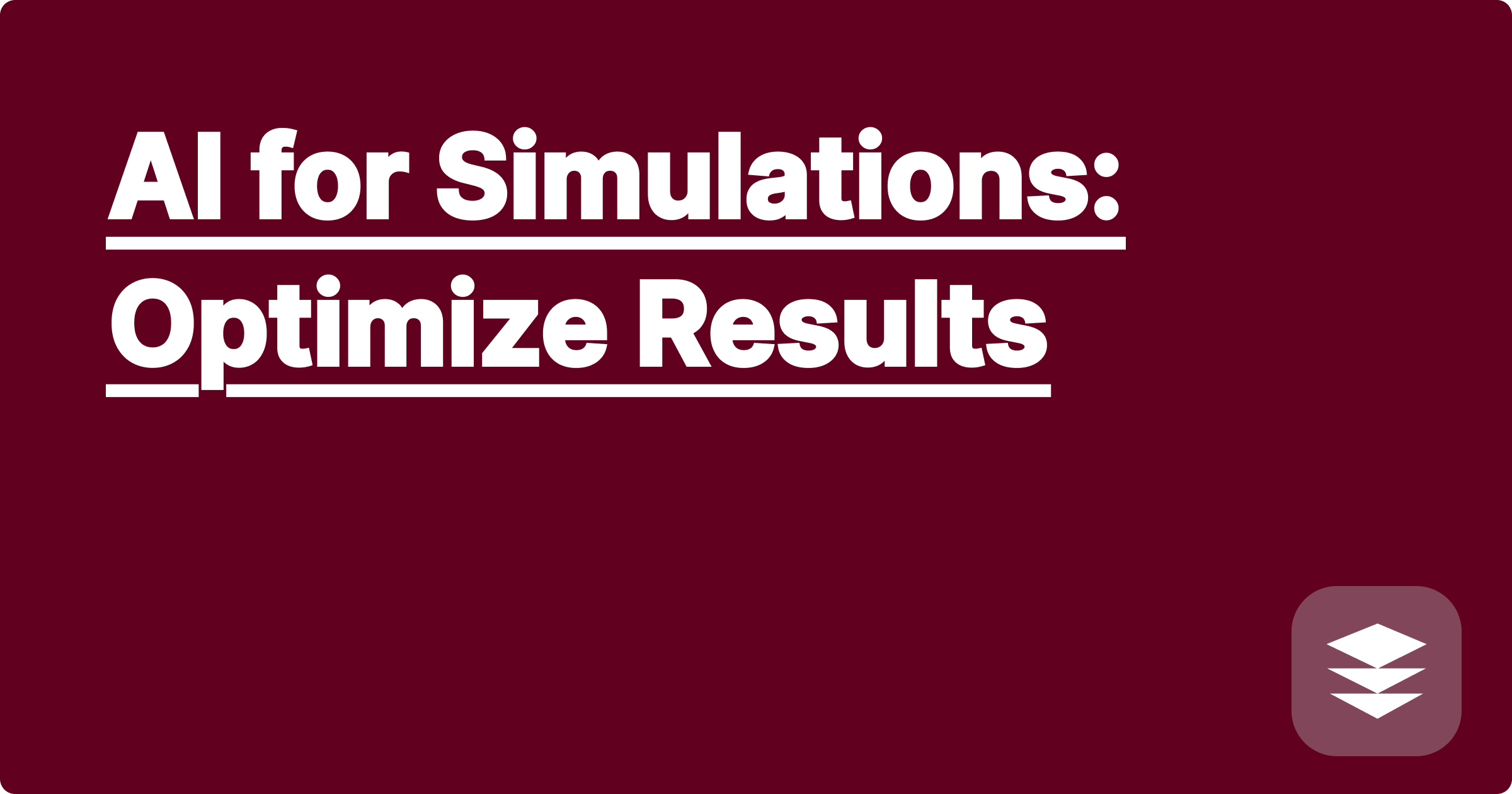
The world of STEM research is rapidly evolving, demanding ever more complex simulations and analyses. Researchers are constantly seeking ways to optimize their simulations, improve accuracy, and accelerate the pace of discovery. Traditional methods often involve tedious manual adjustments and extensive computational resources, leading to bottlenecks in the research process. However, the emergence of artificial intelligence (AI) offers transformative solutions to these challenges, paving the way for a new era of efficiency and innovation in STEM.
For STEM students and researchers, optimizing simulations is not just about achieving accurate results; it's about maximizing productivity and making the most of valuable research time. Imagine spending hours tweaking parameters in a simulation, only to find that the results are marginally improved. This is where AI comes in, providing intelligent tools to automate tedious tasks, explore complex parameter spaces, and extract meaningful insights from vast datasets. By leveraging AI, researchers can not only improve the quality of their simulations but also free up time for more creative and impactful work.
Simulations are crucial for understanding complex systems in various STEM fields. They allow researchers to model intricate phenomena, predict outcomes, and design experiments. However, traditional simulation methods can be computationally expensive and time-consuming, especially when dealing with high-dimensional parameter spaces. Finding the optimal set of parameters that yield desired results often involves a trial-and-error approach, which can be inefficient and limit the scope of exploration. Moreover, analyzing the vast amounts of data generated by simulations can be overwhelming, making it difficult to extract meaningful insights and draw accurate conclusions. These challenges can significantly hinder research progress and prevent researchers from fully leveraging the potential of simulations.
AI offers a powerful arsenal of tools to address the challenges of simulation optimization. AI algorithms can automate the process of parameter tuning, exploring the parameter space more efficiently than traditional methods. Machine learning models can be trained to predict simulation outcomes based on input parameters, reducing the need for computationally expensive simulations. Furthermore, AI-powered data analysis tools can help researchers identify patterns, trends, and anomalies in simulation data, facilitating faster and more accurate interpretation of results. Tools like ChatGPT and Claude can be used to generate code for different simulation scenarios, saving valuable time and reducing the risk of coding errors. Wolfram Alpha can be utilized for symbolic calculations and mathematical modeling, further streamlining the simulation process.
Let’s consider a hypothetical scenario where a researcher is trying to optimize the design of a wind turbine blade using computational fluid dynamics (CFD) simulations. First, the researcher would gather historical simulation data, including blade geometries, wind conditions, and performance metrics. This data is then used to train a machine learning model, such as a neural network, to predict the performance of a given blade design. Next, an optimization algorithm, like a genetic algorithm, can be coupled with the trained model. The algorithm iteratively generates new blade designs, evaluates their performance using the predictive model, and selects the best-performing designs for the next generation. This process continues until an optimal or near-optimal blade design is found. Throughout this process, visualization tools can be used to monitor the optimization progress and gain insights into the relationship between design parameters and performance.
In materials science, AI can be used to predict the properties of new materials based on their composition and structure, accelerating the discovery of novel materials with desired characteristics. For instance, researchers have used machine learning to predict the band gap of perovskite materials, which are promising candidates for solar cell applications. In drug discovery, AI can be used to simulate the interaction of drug molecules with target proteins, helping researchers identify potential drug candidates more efficiently. AI-powered image analysis can be applied to analyze microscopy images of cells, automating the process of cell counting and classification, saving researchers countless hours of manual work. In climate modeling, AI can be used to analyze large climate datasets and improve the accuracy of climate predictions, helping us better understand and address the challenges of climate change.
Embrace AI tools as part of your research workflow. Don't be afraid to experiment with different AI platforms and find the ones that best suit your needs. Start with small projects and gradually incorporate AI into more complex research tasks. Remember that AI is a tool, not a replacement for human expertise. Critical thinking and domain knowledge are still essential for interpreting AI-generated results and drawing meaningful conclusions. Document your AI-driven workflows and share your findings with the research community. Collaboration and knowledge sharing are crucial for advancing the field of AI-powered research. Consider using a virtual AI partner like a hypothetical "GPAI" (Generalized Personal AI) to manage your research tasks, schedule experiments, and even help with literature reviews. Imagine having a dedicated AI assistant that can analyze your data, generate reports, and even suggest new research directions. While such a tool might not exist in its complete form yet, the rapid advancements in AI suggest that it may become a reality in the near future.
By embracing AI, STEM students and researchers can unlock new levels of productivity and accelerate the pace of scientific discovery. Start exploring the vast potential of AI today and transform your research workflow. The future of STEM research is AI-powered, and it's time to be a part of it.
AI in Robotics: Efficient Simulations
GPAI: Your AI Study Partner for STEM
AI Research Notes: Organize Smartly
Ace STEM Exams: AI Study Partner
AI in CAD: Design Smarter, Faster
AI for Chemistry: Equation Ace
AI for Biology: Data Visualization
AI for Simulations: Optimize Results